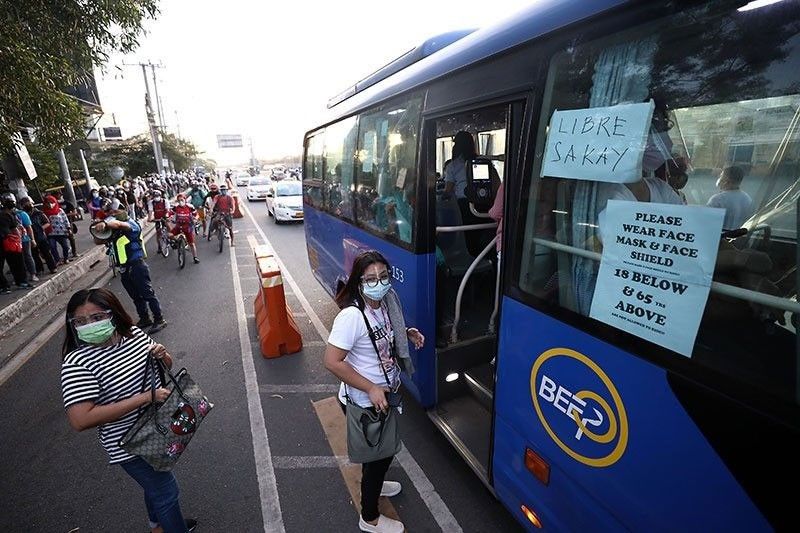Transit Advertising Philippines: Get To Countless Commuters Daily
Transit Advertising Philippines: Get To Countless Commuters Daily
Blog Article
How Transit Advertising And Marketing Can Change Mass Transit Spaces Into Dynamic Advertising And Marketing Platforms
Transit advertising holds significant potential to redefine public transport spaces right into lively advertising and marketing platforms that engage and educate. As we discover the multifaceted advantages and advancing strategies of transit advertising and marketing, it increases the inquiry of exactly how this change can redefine our interactions with both brand names and the city environment.
Advantages of Transportation Marketing

Additionally, transportation advertising is highly cost-effective compared to conventional media. It enables marketers to attain high impressions at lower prices, maximizing roi. The captive audience of travelers supplies an opportunity for brands to communicate their messages to individuals that are typically receptive during their traveling times.
In addition, the vibrant nature of transit advertising enables projects to be upgraded often, making sure that messaging stays pertinent and prompt. This versatility can be important in reacting to market patterns or promotional events, maintaining the brand name top-of-mind for consumers. Finally, the prevalent presence of transportation advertising adds to brand recall; duplicated direct exposure within acquainted travel contexts strengthens brand recognition and cultivates consumer commitment, ultimately driving sales and improving brand name online reputation.
Types of Transit Advertising
Mass transit systems offer numerous layouts for advertising and marketing, each satisfying various advertising and marketing methods and audience involvement techniques. One famous type is exterior bus and train covers, which cover the entire car and produce a mobile signboard impact, allowing for high visibility in city atmospheres. These covers can record interest as they go across hectic streets, getting to a varied target market.
One more preferred style is interior advertising and marketing, which consists of posters, electronic displays, and advertisements on transportation seats. These positionings engage passengers throughout their trip, strengthening brand name messaging in a confined room. Digital presents, particularly, offer the advantage of vibrant content, enabling marketers to update messages in real-time.
Station marketing is also substantial, including posters, banners, and interactive kiosks within transportation terminals. These ads leverage foot website traffic and can target certain demographics based on area.
Finally, promotional collaborations with transit authorities can bring about special projects, such as themed transit experiences or occasions, enhancing the total interaction with travelers. Each sort of transit marketing offers distinctive benefits, permitting brand names to tailor their technique to successfully reach their target audience within the general public transportation ecological community.
Engaging Travelers Effectively
Travelers are significantly inundated with advertising and marketing messages during their everyday travels, making it vital for brand names to engage them in cutting-edge ways. To catch focus in this crowded area, marketers should focus on creative thinking and significance. Using attractive visuals and succinct messaging can significantly enhance the probability of involvement.
Interactive aspects, such as QR codes or enhanced fact features, can also transform static ads into immersive experiences, fostering a deeper link with the audience. Brands ought to focus on attending to commuters' requirements and rate of interests, customizing messages to reverberate with their resource way of living, whether via promotions for local companies or services created to boost their travelling experience.
In addition, timing plays a crucial role; strategically placing advertisements during height travelling hours can maximize visibility and impact. Engaging travelers effectively additionally entails leveraging social media sites assimilation, enabling travelers to share their promotions or experiences directly from transit systems, therefore intensifying brand name reach.
Basically, efficient involvement depends upon understanding the commuter trip and developing engaging, interactive, and appropriate marketing experiences that not only capture focus yet likewise drive activity and commitment. By doing index so, brand names can transform mass transit into a vibrant advertising system that resonates with its target market.

Measuring Advertising And Marketing Impact
Just how can brands properly evaluate the effectiveness of their marketing campaign in transit settings? Measuring the influence of transit advertising and marketing requires a diverse strategy that combines measurable and qualitative metrics. One widespread technique is tracking engagement via mobile analytics, where brand names can analyze foot web traffic patterns and app communications before, throughout, and after campaigns.
Studies can offer beneficial insights right into brand recall and customer sentiment, enabling brands to gauge exactly how well their messages resonate with commuters. Furthermore, keeping track of social media involvement associated to specific projects can disclose shifts in public assumption and brand conversation.

Furthermore, collaborating with transit firms can enhance measurement accuracy, as they usually have comprehensive group view it now data on ridership patterns. By incorporating these techniques, brand names can develop a comprehensive understanding of their advertising efficiency, making certain that their campaigns not only reach but also affect their target audiences successfully.
Future Fads in Transportation Advertising And Marketing
A significant change is prepared for en route advertising and marketing as technical innovations and transforming customer actions improve the landscape. Transit Advertising Philippines. The combination of interactive media and digital display screens is anticipated to boost engagement, permitting brands to deliver vibrant material that resonates with varied target markets. As mass transit systems embrace smart technology, marketers will utilize real-time data analytics to tailor messages based on traveler demographics and behaviors
Additionally, increased fact (AR) is poised to change the way commuters engage with promotions. By supplying immersive experiences, AR can change a mundane trip into an appealing narrative that records interest and cultivates brand name loyalty. This development will likely encourage advertisers to produce even more experiential projects that drive customer interaction.
Sustainability is one more vital pattern influencing transportation advertising. As environmental consciousness expands, brands will progressively look for to straighten with environment-friendly techniques, utilizing sustainable materials and promoting green campaigns within their campaigns.
Verdict
In verdict, transit advertising and marketing supplies significant benefits by boosting brand exposure and involving a restricted target market. As patterns progress, the possibility for cutting-edge communications in between travelers and brand names is positioned to expand, making sure that transportation advertising and marketing continues to be an essential part of modern marketing techniques.
Transit marketing holds considerable potential to redefine public transportation spaces right into vivid advertising and marketing systems that involve and notify. The pervasive presence of transportation advertising and marketing adds to brand recall; repeated direct exposure within acquainted travel contexts reinforces brand name recognition and promotes consumer loyalty, inevitably improving and driving sales brand credibility.
Exactly how can brand names properly analyze the efficiency of their advertising projects in transportation environments?In conclusion, transportation advertising supplies considerable advantages by boosting brand visibility and engaging a restricted audience. Transit Advertising Philippines. As trends progress, the capacity for cutting-edge interactions between travelers and brands is positioned to grow, making sure that transit advertising and marketing remains an important part of contemporary advertising and marketing methods
Report this page